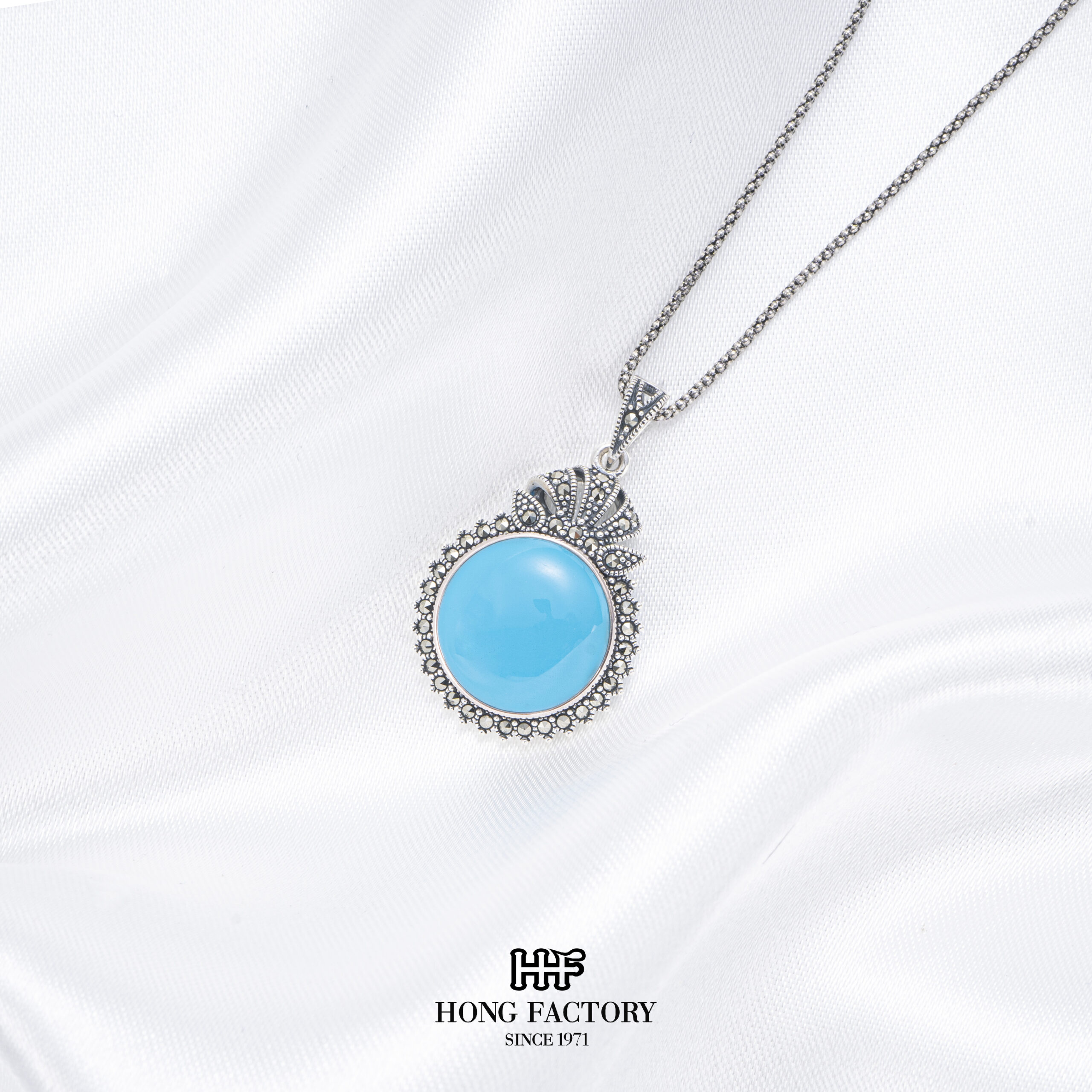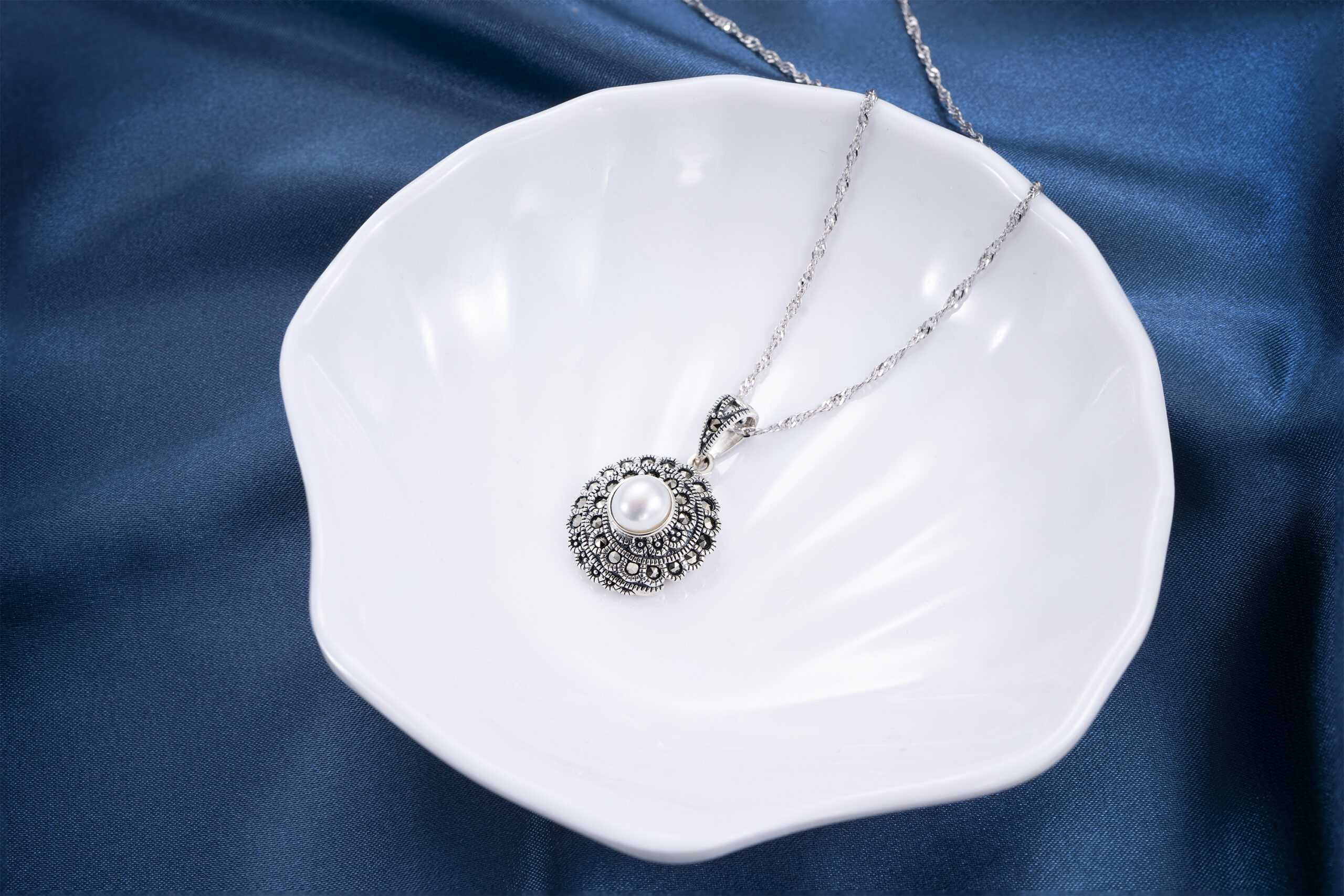
Marcasite necklaces are beloved for their vintage elegance, intricate detailing, and subtle sparkle. Like all fine jewelry, they require careful maintenance to preserve their beauty and structural integrity. Because marcasite stones are delicate and often set in intricate patterns, proper cleaning and storage techniques are essential to avoid damage. In this guide, we outline simple and effective care tips for cleaning and storing your marcasite necklaces.
Understanding Marcasite’s Delicate Nature
Marcasite necklaces are typically crafted from sterling silver and feature small pyrite stones set into detailed designs. These settings are often delicate, with stones secured by glue or fine prongs, making them vulnerable to moisture, chemicals, and rough handling. Proper care ensures longevity and lasting brilliance.
Daily Care Tips
- Avoid Moisture: Remove your marcasite necklace before showering, swimming, or engaging in activities that may expose it to water.
- Limit Exposure to Chemicals: Avoid contact with lotions, perfumes, hair sprays, and cleaning agents, which can damage both the stones and silver.
- Handle Gently: Always put on your necklace after applying cosmetics and grooming products to minimize exposure.
- Wear Mindfully: Avoid wearing your marcasite necklace during vigorous activities to prevent accidental impact or snagging.

Cleaning Marcasite Necklaces
Because of their intricate design and delicate stones, marcasite necklaces require gentle cleaning methods:
Regular Cleaning
- Soft Cloth Wiping: After each wear, gently wipe your necklace with a clean, dry microfiber or jewelry polishing cloth to remove surface oils and dirt.
Deeper Cleaning
- Mild Soap Solution: If your necklace requires more thorough cleaning, prepare a solution of lukewarm water with a drop of mild dish soap.
- Spot Clean Only: Dampen a soft cloth with the solution and gently clean the surface, focusing on the silver and avoiding excessive moisture around the stones.
- No Soaking: Never submerge your marcasite necklace in water, as moisture can loosen the adhesive and weaken the settings.
- Thorough Drying: Use a dry, soft cloth to carefully remove all moisture from the necklace, especially from stone crevices and intricate areas.
What to Avoid
- Ultrasonic Cleaners: The vibrations can dislodge or damage the small marcasite stones.
- Harsh Chemicals: Strong cleaning agents can tarnish silver and degrade stone settings.
- Abrasive Cloths: Avoid materials that may scratch or damage the delicate surface.

Storage Tips for Marcasite Necklaces
Proper storage helps prevent tarnishing, scratching, and damage to the intricate settings:
- Individual Storage: Store each necklace separately in a soft-lined jewelry box or pouch to prevent tangling and scratching.
- Avoid Humidity: Store your jewelry in a cool, dry place away from direct sunlight and moisture, which can accelerate tarnishing.
- Use Anti-Tarnish Strips: Place anti-tarnish strips inside the jewelry box to help reduce oxidation of the sterling silver.
- Travel Protection: When traveling, use padded jewelry travel cases to keep your necklace secure and protected from movement and impact.
Professional Maintenance
- Routine Inspections: Have your marcasite necklace inspected by a jeweler periodically to check for loose stones or damaged settings.
- Professional Cleaning: For heavily tarnished or vintage pieces, professional cleaning can safely restore shine and maintain structural integrity.
With gentle care and proper storage, marcasite necklaces can maintain their stunning appearance for years to come. By following these cleaning and maintenance tips, you’ll protect both the beauty and durability of your jewelry, ensuring it remains a cherished piece in your collection. Thoughtful care allows you to enjoy the timeless elegance of marcasite necklaces for generations.
